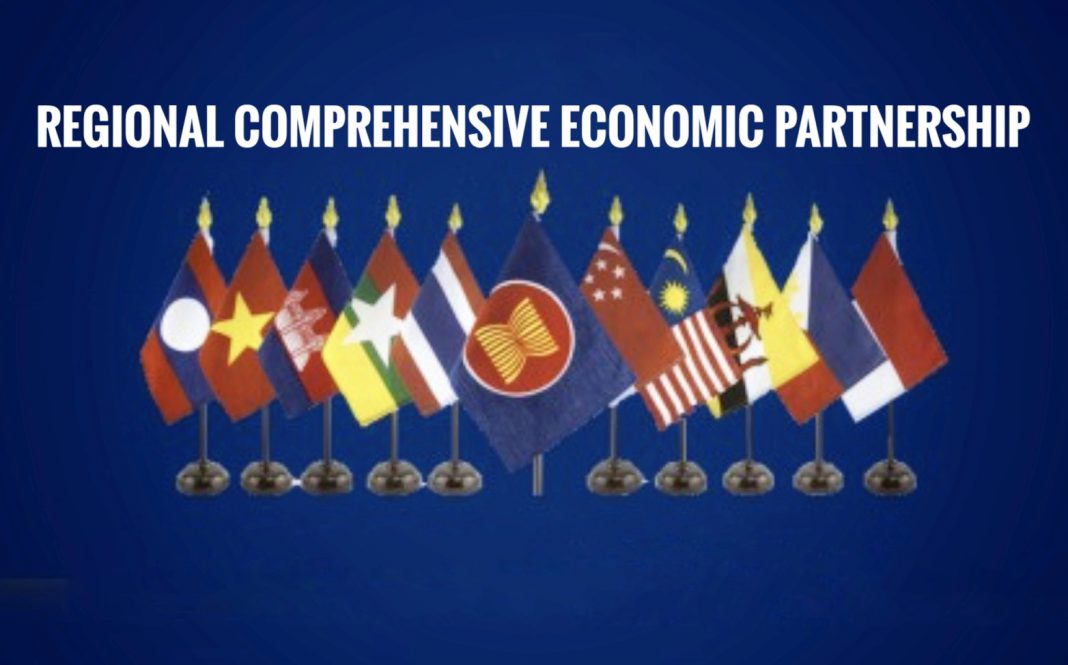By Victoria “NIKE” De Dios
First, it was just a dream but after a sustained meeting and concrete plans. the implementation of the Regional Comprehensive Economic Partnership’s (RCEP) implementation will create mega trade deal is key to the Association of Southeast Asian Nations’ (ASEAN) effective response to the challenging post-pandemic landscape according to several economists.
The COVID-19 crisis has created two major trends for ASEAN-it has rearranged the regional and global supply chains and underscored the growing importance of the digital economy, said Yose Rizal Damuri, economics department head at the Center for Strategic and International Studies in Indonesia, in a recent online forum.
Damuri noted that innovatively deepening global value chains requires mega free trade agreements (FTAs) like RCEP. The economic partnership can provide the appropriate framework for the necessary rules and principles to make the benefits of these two trends more sustainable and inclusive.
In addition, RCEP can be a venue for discussions on future trends and actions, including on setting up cross-border e-commerce rules and dealing with many other 21st century issues.
Damuri also underlined the need to have India, which withdrew from the FTA negotiations, join RCEP since the country has a strong presence in digital technologies. The 15 RCEP signatory states have kept the doors open for India, one of the world’s biggest economies, so the FTA will be able to have a wider and larger coverage.
The RCEP is an ambitious trade deal seeking to further promote regional trade and investment. Signed in November 2020, it is one of the world’s largest FTAs, accounting for about 30% of global GDP. It consists of the 10 ASEAN members and the five dialogue partners China, South Korea, Japan, Australia and New Zealand.
Anna Robeniol, a director at the ASEAN Secretariat, emphasized that RCEP provides major benefits through its trade facilitation chapter that exceeds World Trade Organization measures.
Salvador Buban, policy fellow at Economic Research Institute for ASEAN and East Asia, also pointed out that several RCEP provisions, such as those on e-commerce, government procurement, and competition, are not found in other FTAs.
He explained that the trade facilitation chapter provides more definitive and predictable commitments from the signatories, providing predictability while allowing changes when it comes to openness and clearance of goods.
Another significant RCEP contribution is consolidation of the rules of origin in ASEAN, so that an exporter will only need to use one set of rules and RCEP parties will have an easier time to comply with the preferential tariff treatment, he added.
He also said that the economic impacts of services sector liberalization and trade facilitation improvement in RCEP are much more significant than the tariff reduction offered in other FTAs.
Meanwhile, Tamura Aki, director-general for trade policy of Japan’s Ministry of Economy, Trade and Industry, said that amidst the COVID-19 crisis, the FTA is “a signal to the world that the RCEP countries are committed to supporting open markets and promoting trade cooperation.”
Tamura expressed hopes that the RCEP will continue to develop as a regional platform with “ASEAN centrality” as its foundation.
ASEAN centrality refers to the central role the region will play in shaping the regional security architecture, regional order, and power dynamics among external powers with interests in the region.
Finally, Professor Emeritus Urata Shujiro of Waseda University suggested that the next step is to broaden the regional framework to include the Asia-Pacific or Indo-Pacific.
“There are already existing frameworks such as CPTPP and Free and Open Indo-Pacific. These frameworks should be extended to include Europe because European countries are very much interested in regional affairs in Asia in recent years,” Urata said.














